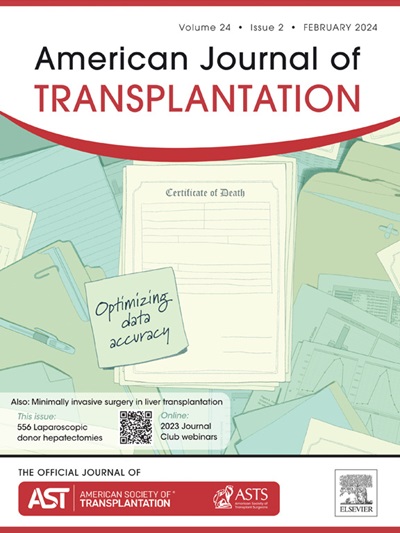Liver transplantation for acute liver failure and acute-on-chronic liver failure
IF 8.9
2区 医学
Q1 SURGERY
引用次数: 0
Abstract
Acute liver failure (ALF) and acute-on-chronic liver (ACLF) are distinct phenotypes of liver failure and, thus, need to be compared and contrasted for appropriate management. There has been a significant improvement in the outcomes of these patients undergoing liver transplantation (LT). Survival post-LT for ALF and ACLF ranges between 90% and 95% and 80% and 90% at 1 year, futility criteria have been described in both ALF and ACLF where organ failures define survival. Plasma exchange and continuous renal replacement therapy may serve as bridging therapies. Identifying the futility of LT is as necessary as the utility of LT in patients with ALF and ACLF. The role of regenerative therapies such as granulocyte colony-stimulating factors in ACLF and hepatocyte and xenotransplantation in both conditions remains uncertain. Measures to increase the donor pool through increasing deceased donor transplants in Asian countries, living donations in Western countries, auxiliary liver transplants, and ABO-incompatible liver transplants are necessary to improve the survival of these patients. In this review, we discuss the similarities and differences in clinical characteristics and the timing and outcomes of LT for ALF and ACLF, briefly highlighting the role of bridging therapies and providing an overview of recent advances in the management of ALF and ACLF.
肝移植治疗急性肝衰竭 (ALF) 和急性慢性肝衰竭 (ACLF)。
急性肝衰竭(ALF)和急性慢性肝衰竭(ACLF)是肝衰竭的不同表型,因此需要进行比较和对比,以便采取适当的治疗措施。这些患者接受肝移植(LT)后的疗效有了明显改善。ALF和ACLF肝移植后1年的存活率分别为90%-95%和80%-90%,ALF和ACLF都有器官衰竭定义存活的无效标准。血浆置换和持续肾脏替代疗法可作为过渡疗法。在ALF和ACLF患者中,确定LT的无效性与LT的实用性同样必要。粒细胞集落刺激因子等再生疗法在 ACLF 中的作用以及肝细胞和异种移植在这两种疾病中的作用仍不确定。为了提高这些患者的存活率,有必要采取措施,通过增加亚洲国家的尸体移植、西方国家的活体捐献、辅助肝移植和ABO不相容肝移植来增加供体库。在这篇综述中,我们讨论了ALF和ACLF的临床特征、LT时机和结果的异同,简要强调了桥接疗法的作用,并概述了ALF和ACLF治疗的最新进展。
本文章由计算机程序翻译,如有差异,请以英文原文为准。
求助全文
约1分钟内获得全文
求助全文
来源期刊
CiteScore
18.70
自引率
4.50%
发文量
346
审稿时长
26 days
期刊介绍:
The American Journal of Transplantation is a leading journal in the field of transplantation. It serves as a forum for debate and reassessment, an agent of change, and a major platform for promoting understanding, improving results, and advancing science. Published monthly, it provides an essential resource for researchers and clinicians worldwide.
The journal publishes original articles, case reports, invited reviews, letters to the editor, critical reviews, news features, consensus documents, and guidelines over 12 issues a year. It covers all major subject areas in transplantation, including thoracic (heart, lung), abdominal (kidney, liver, pancreas, islets), tissue and stem cell transplantation, organ and tissue donation and preservation, tissue injury, repair, inflammation, and aging, histocompatibility, drugs and pharmacology, graft survival, and prevention of graft dysfunction and failure. It also explores ethical and social issues in the field.

 求助内容:
求助内容: 应助结果提醒方式:
应助结果提醒方式:


